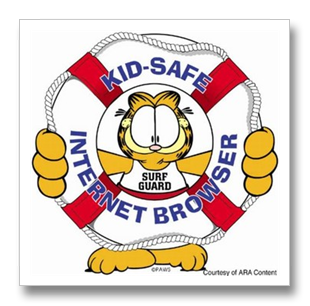Content control or filtering of the internet in schools remains a hot topic of debate within schools. Not just for LEA administrators, school leaders and Network Managers but believe me, for the students. Frustrated by the disparity of home and school internet access, students and Networks Managers engage in the traditional cat and mouse tomfoolery, usually reserved for the Caretaker, now Premises Manager.
This evening I have read guidelines, browsed acronyms ‘PIES’, perused case studies and had my ‘awareness’ raised on numerous occasions, but who is actually responsible for what a student accesses online at school? Now that is much harder to pin down.
We update our AUP annually, share it with students via the background image and through a start-up window that logs the user off if it is not accepted. The policy is reinstated term but does that make us devolve us of our responsibility? In the PC classrooms we have traditionally used AB Tutor to add an additional layer of content control by as we expand our technology support so new scenarios emerge.
Our next focus in our Laptop4Learnign scheme, supporting 1-2-1 netbooks for students in Years 9-11. Students being distracted or misusing the hardware are part and parcel of school policy but what students challenging the accuracy of what they are being taught (quietly supported by Google or Bing)? Or students piggy backed unsecured wireless connections for school neighbours? We have pre-empted situations, we have written guidelines, we have engaged with students and their parent / guardians, we are learning every term, but where does our schools responsibility to student e-safety end? Now the real big question. Who is responsible for online content accessed using the supported hardware but through their own ISP? Is the responsibility now solely with the parents / guardian?
I am a strong advocate of 1-2-1 learning, especially the continuity of learning. I have seen the logs, students engaging via the VLE in class, clamming down, only to reconnect later that afternoon, submitting their homework later that day. IMHO continuity is one the clearest benefits. Access to knowledge, and different types of knowledge comes a close second. Listening the a Thomas Hardy ‘The Withered Arm’ recording, watching and re-watching key scenes Romeo and Juliet (1996) scenes via host video sites (ironically blocked in school), chatting, quizzing, flash-carding…. you have heard the case for blended learning a thousand times before. Within these walled gardens that is exciting, but in the big wicked wonderful wide world, who is responsible for what the students access? Who is going to advise education? Who will ultimately take responsibility?

